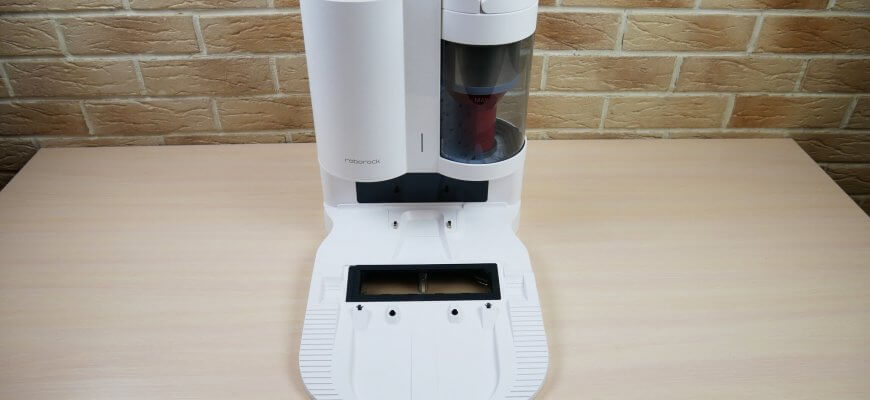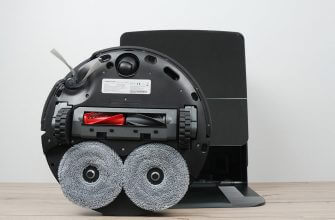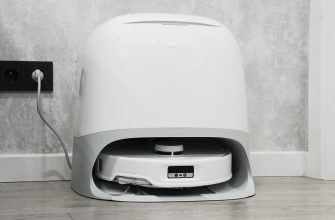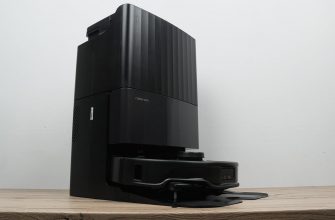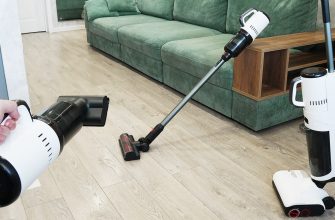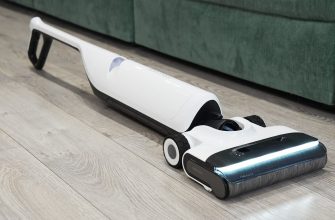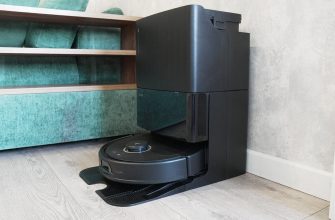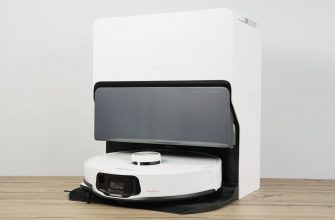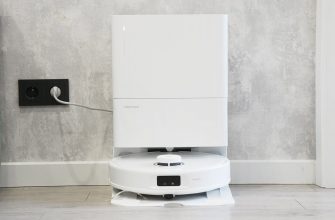Hey guys, welcome to RobotObzor! Today I’ll show you Roborock S7’s self-cleaning base (Roborock S7 Auto Empty Dock), which finally showed up on the market. The base’s characteristics are somewhat superior to its competitors, which also affects the price. Right now, the base is $300. In this review I’ll show how the base works, why it’s special, and most importantly – how well the robot does its main job, cleaning dirt out of the vacuum’s dust collector. Let’s get started!
Package
The self-cleaning base was packaged in this bright box:
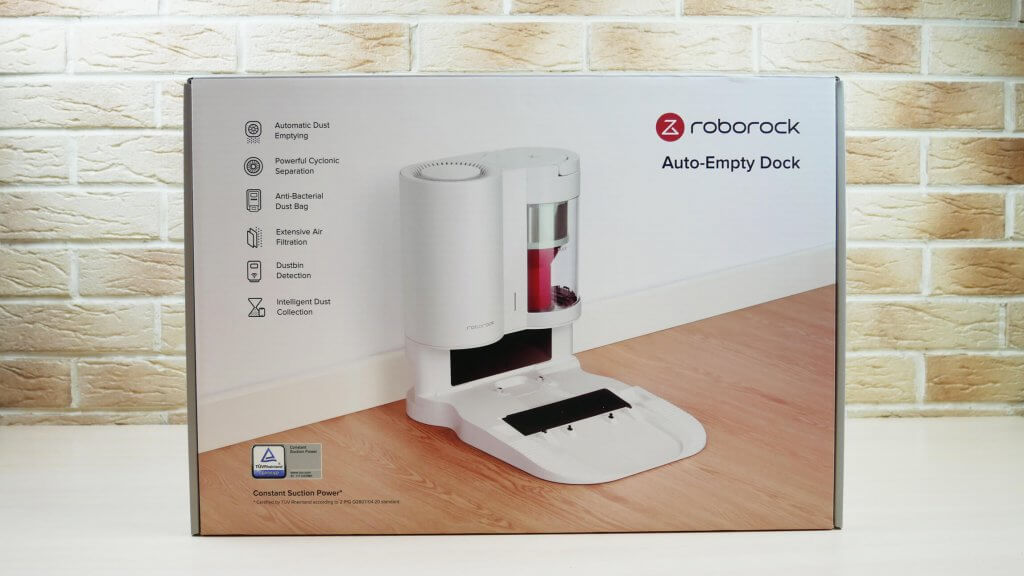
It contains:
- The base frame.
- The so-called motor compartment with the dirt container.
- Powercord.
- A brief starter guide.
- A thorough manual in multiple languages.
- A special dirt container, which allows the robot-vacuum to self-clean.
- The bag holder.
- A single use bag for the base.
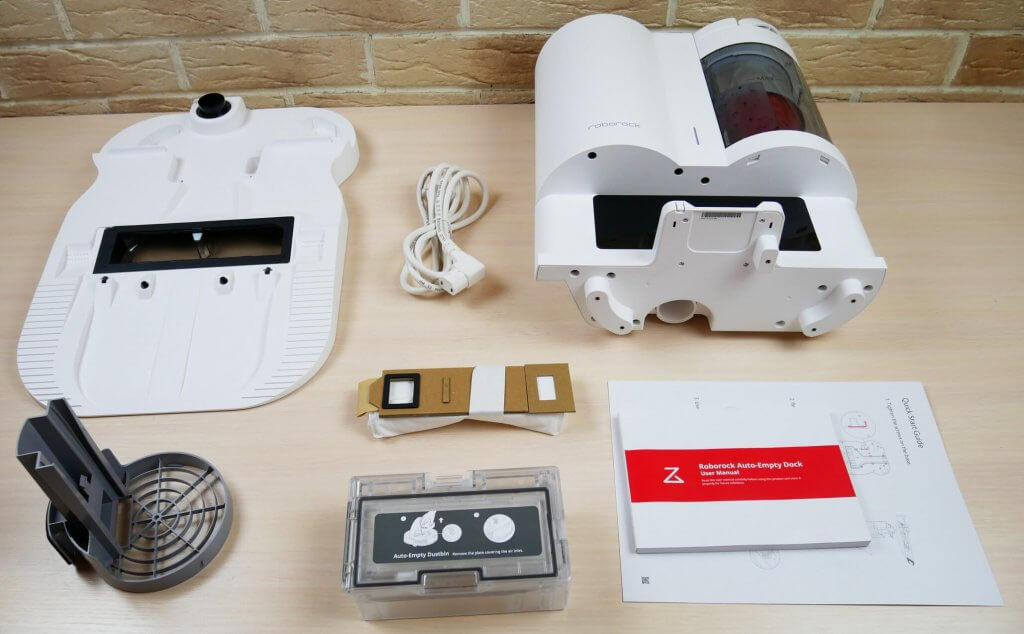
Design
Now let’s see how our self-cleaning base works. First we have to assemble it so it could work. On the bottom attached is a special tool for screwing the bolts tight. The bolts which attach the platform to the motor, are labeled with numbers. There is five of them. Here is how the base looks when finished:
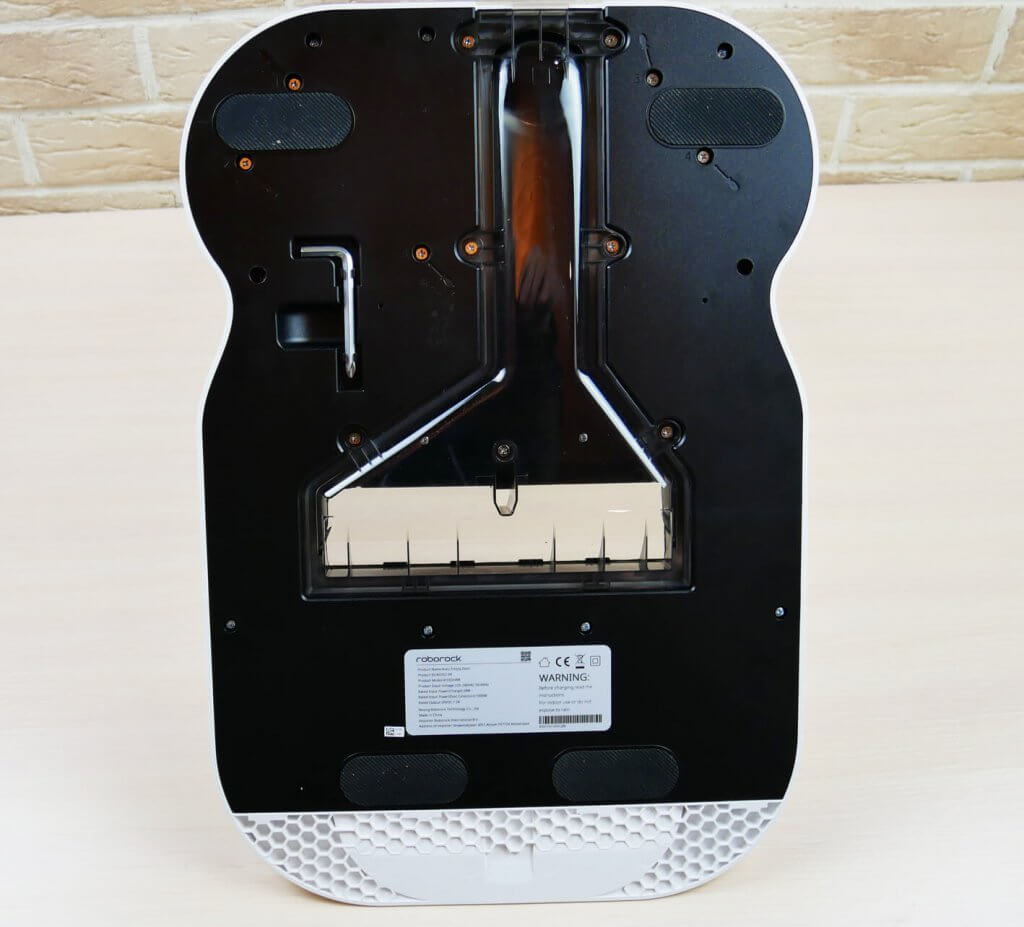
On the platform you can see plugs for charging the vacuum, a suction canal, through which dirt goes from the robot’s dust collector to the base’s bag, as well as brushes that clean the robot’s charging plugs when it goes on the platform.
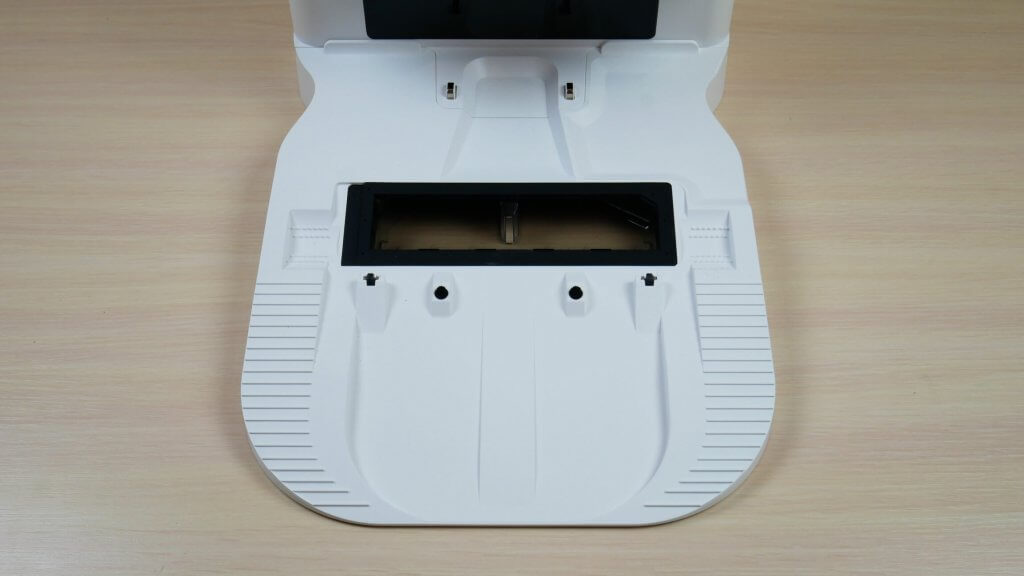
Now let’s take a look at the base’s motor compartment. On the left is the engine itself and the filtration system. By the way, the engine’s power is said to be 1 kW. Note that the Roborock S7 Auto Empty Dock has a well thought out filtration system for the leaving air. Inside is a cloth filter with foam padding, around which is an additional half round HEPA-filter. The filtration system is a big plus for Roborock.
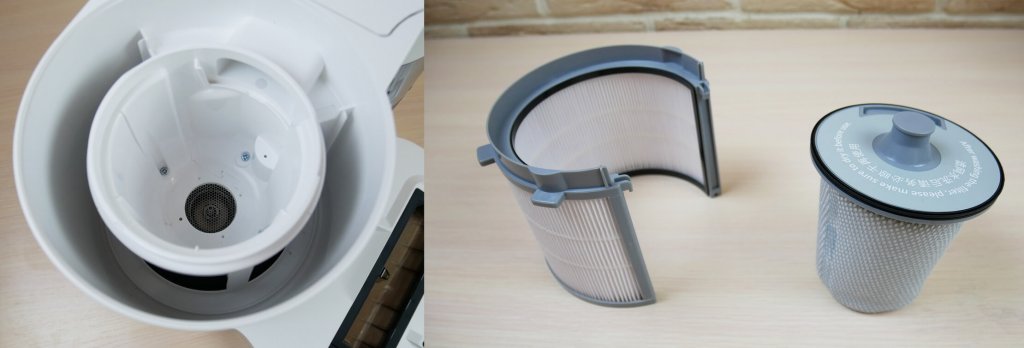
Now let’s look at the dirt collecting compartment. The flask is transparent, and on it we can see a mark for the maximum amount of dirt. On the bottom is a button, which opens the lid on the bottom. This way you can empty the container. Inside the flask is a cyclone that has an additional MESH filter. You can remove it for maintenance. All in all, the dirt collector reminds me of wireless vertical vacuums. Only the sizes are bigger.
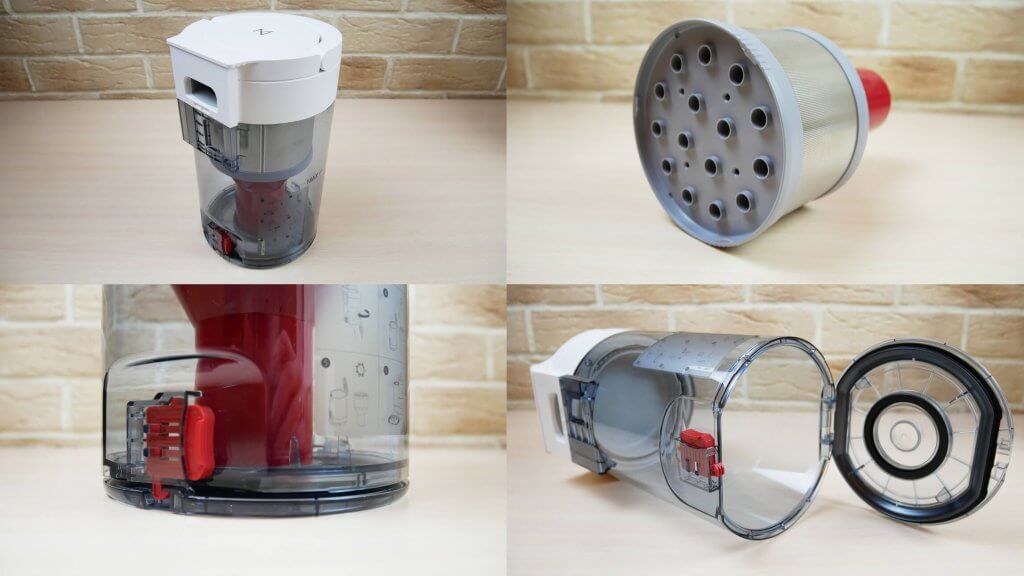
And here is another interesting feature – If you want you can remove the cyclone and put a holder with a bag, which fits up to 3L (.8 gallons) of dry dirt. This is enough for 2-2.5 months of continuous use of the robot. This feature is actually pretty cool – don’t want to touch the dirt at all? Just order the bags and use them. Don’t want to spend extra cash? No problem, just empty the container, and clean it every once in a while. By the way, the cyclone’s and container’s capacity is not stated, but from my experience it’s less than 3L (.8 gallons), so the cyclone takes up a lot of room.
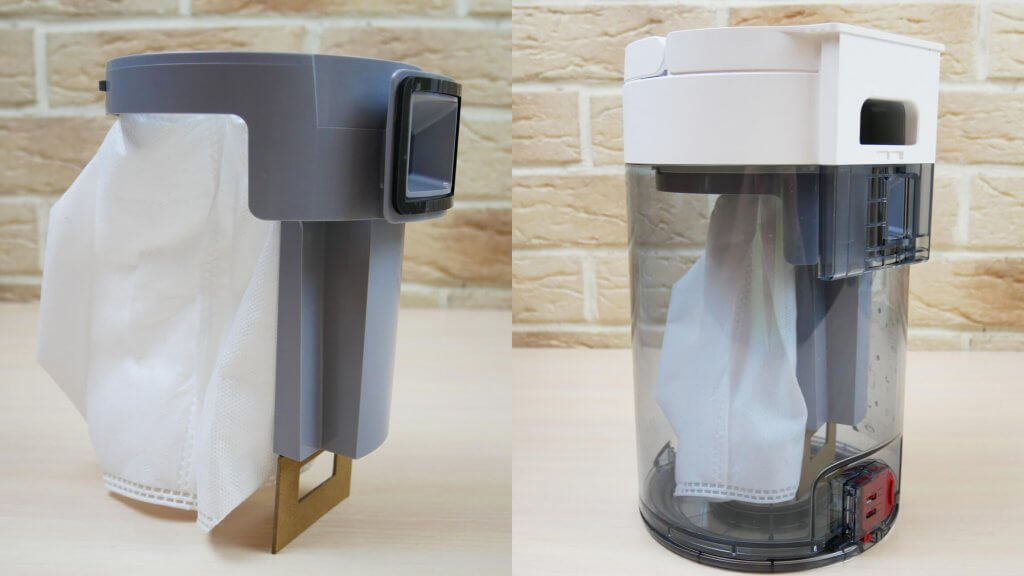
Next I would like to talk about – is the garbage dumping mechanism. On the station’s platform is a docking port. But the usual curtains in the dust collector or at the robot’s bottom aren’t there. This is because the dirt is taken out through a passage where the central brush is located. As you can see, there is enough room between the brush and the canal walls. And the brush moves backwards when unloading the dirt, to help it get to the garbage chute. This decision is still new, and I have never seen this before. Later we’ll see how well this actually works, and how much it helps.
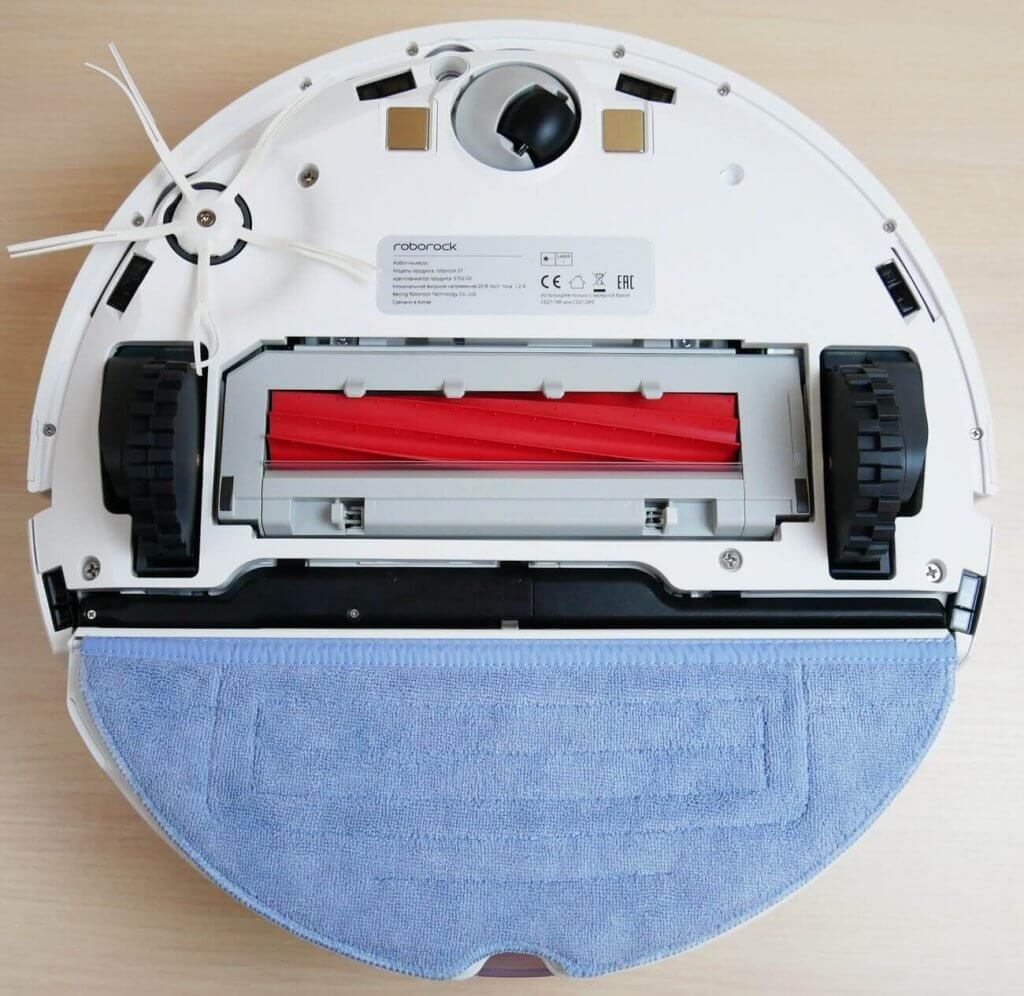
And lastly I would like to notice – the dirt container, which comes with the base. In terms of size, it’s the same as the one in the robot. Though they look slightly different. First of all, the new container has a curtain air vent. And secondly, it doesn’t have a lid, to open the container and take out the dirt. You can of course do this through the compartment with the HEPA-filter, but there really is no point, as the dirt is automatically taken out. I guess this helps if the dirt container is blocked with some object, which the vacuum sucked in.
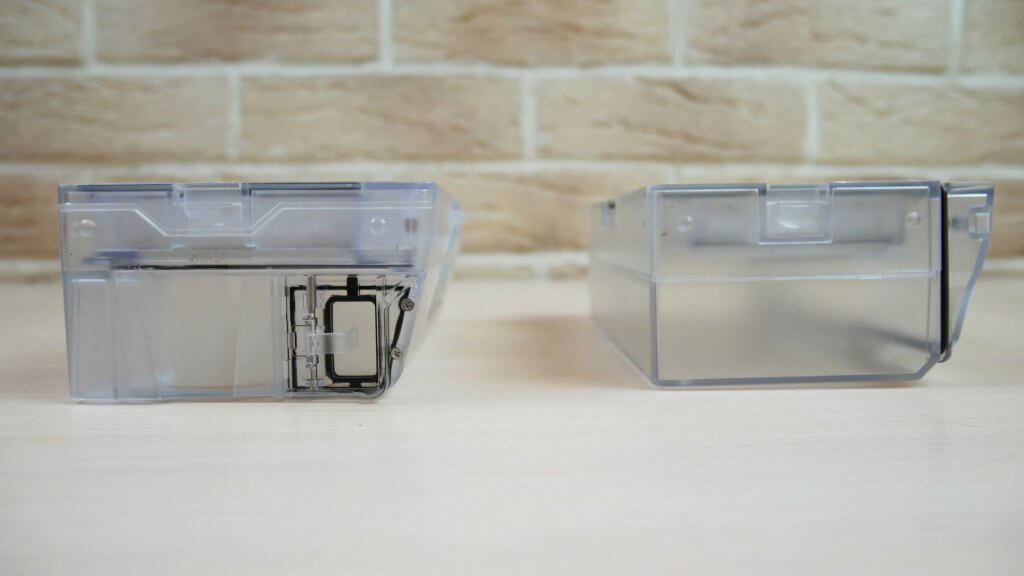
Altogether the self-cleaning base is efficient and performs well. And I have no complaints. Let’s move on!
Here, by the way, is what the Roborock S7 looks like at the self-cleaning station:
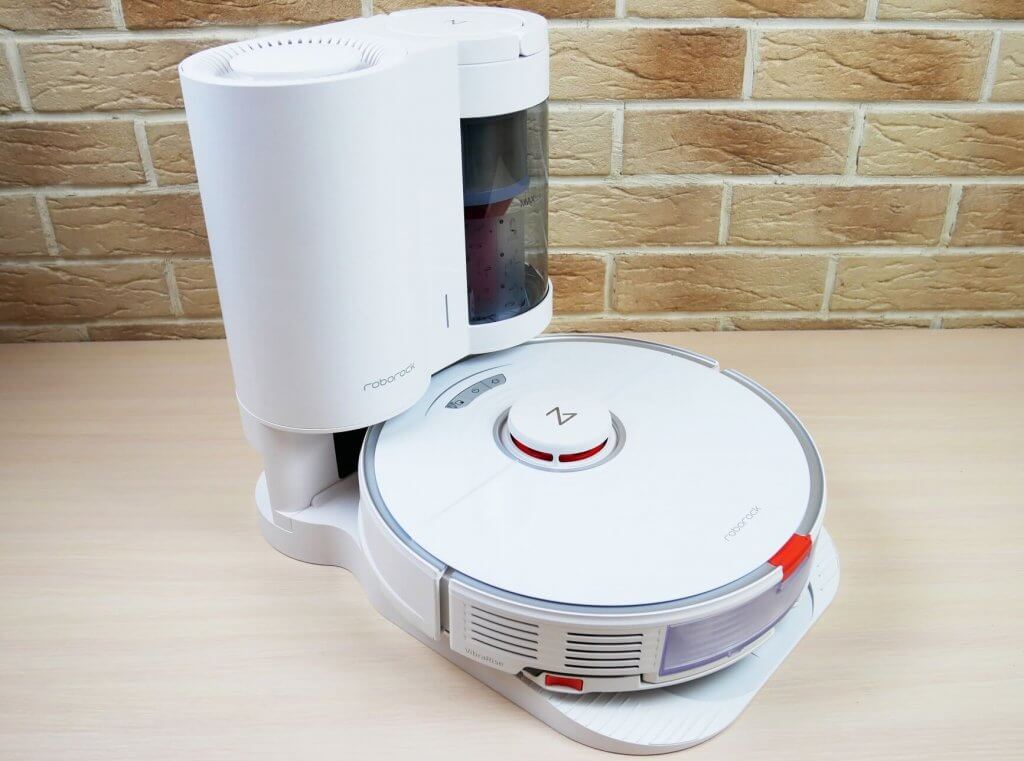
Functionality
When you connect your station to the network, new functions appear on the Mi Home app. The vacuum understands, that that is a self-cleaning base, so you don’t have to connect or set up anything manually, except for updating the app every once in a while.
So right after the self-cleaning station is identified, a short manual pops up on the app. First you have to take off the suction canal’s lid off in the robot and set up the special dirt container.
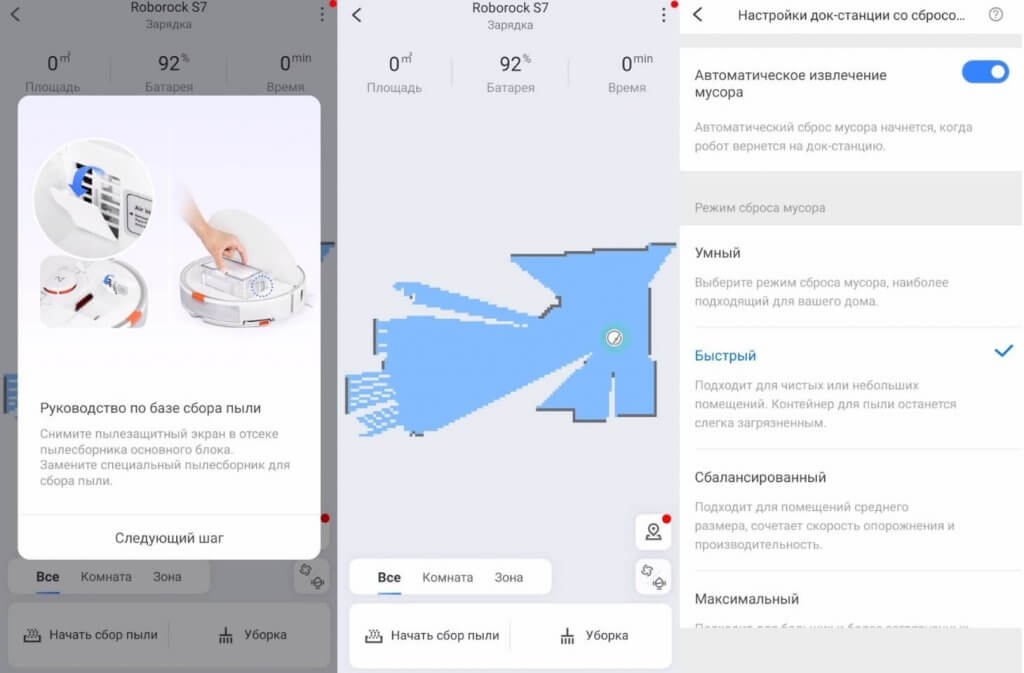
As you can see, a start button for self-cleaning has appeared on the main screen’s bottom left. When you press on it the base immediately starts self-cleaning. By the way, this process only takes up 30 seconds.
In the settings, a new tab opens up labeled “settings for the dock station dirt dumping”. Here you can turn on and off the self-cleaning function, as well as pick out one of the 4 dumping options. As I understand, they differ based on their speed and suction power. But I didn’t really see a difference, for example in between the min and max.
Oh, and note that when you over use the self-cleaning function, it blocks. The robot will tell you that this function can’t be used at this moment, and that you need to wait. You probably will never hear this, but it showed problems during my tests.
Testing the self-cleaning quality
Video:
And let’s move on to the main question – how well does the Roborock S7 base self-clean? I simultaneously tested it alongside other brands, in the same climate, to get the best results and tell me which station is the best. But here I’ll only show Roborock’s results.
I did 6 tests, with different dirt. In order I filled the dirt collector with 100 g (3.5 ounces) of sand, buckwheat, beans, seeds, nut shells, and an unweighted amount of hair and fur.
And I got some interesting results. Roborock S7 sucked out 98 out of 100 grams of sand, only 27 out of 100 grams of buckwheat, 99 out of 100 grams of beans, 81 out of 100 grams of seeds, and only 36 out of 100 grams of shells.
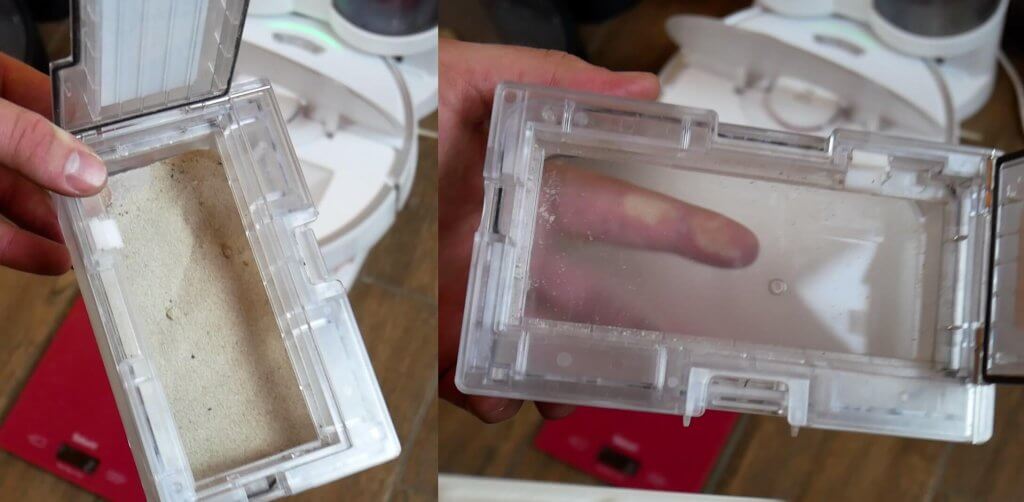
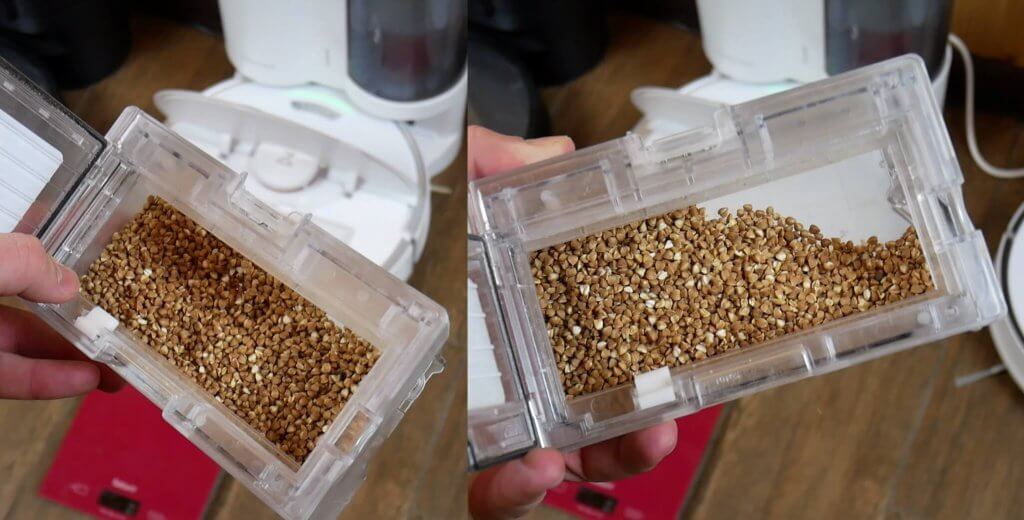
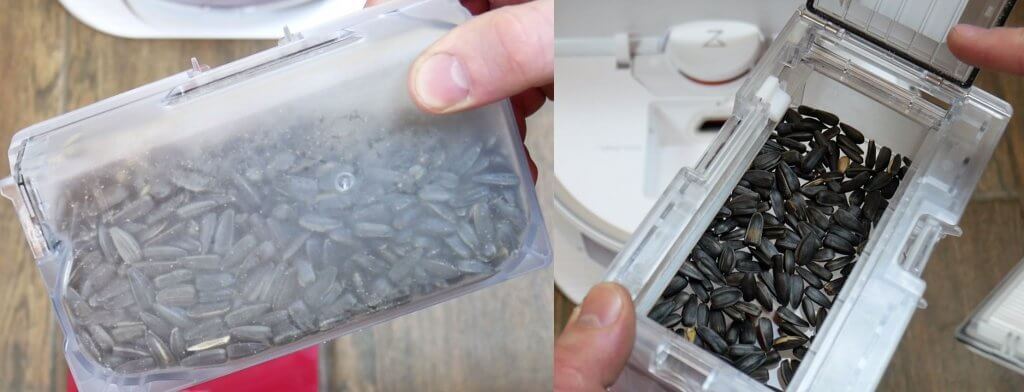
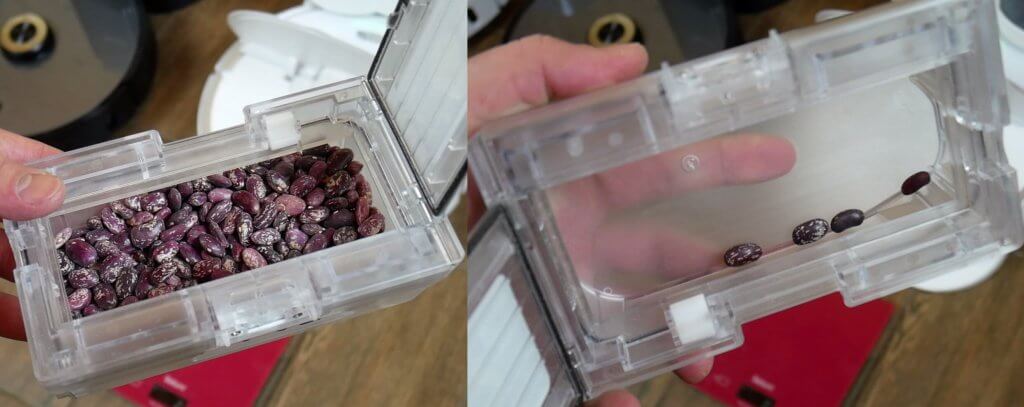
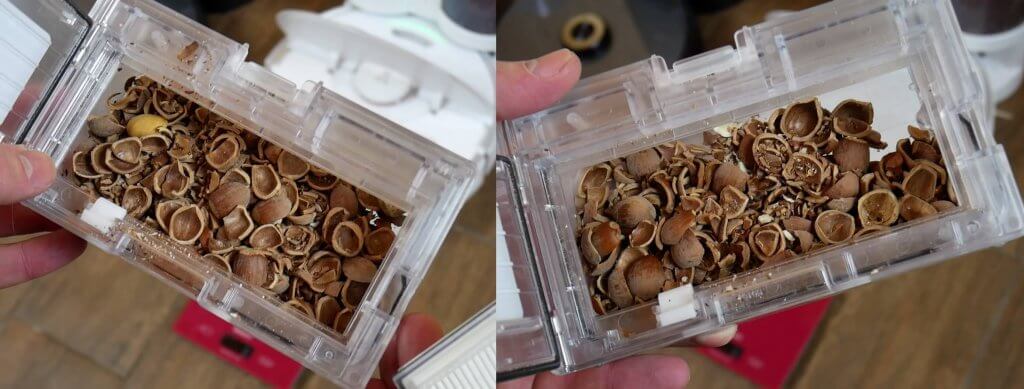
And it only get the hair and fur out the second time, and there still was a problem. Thanks to the dust container, the hair and fur got stretched out, and we can see some of them in the flask. And most of the hair was found in between the central brush and the suction nozzle. And here the station kept sending out error signals and telling me to check the dumping system. So there are problems with unloading the hair and fur.
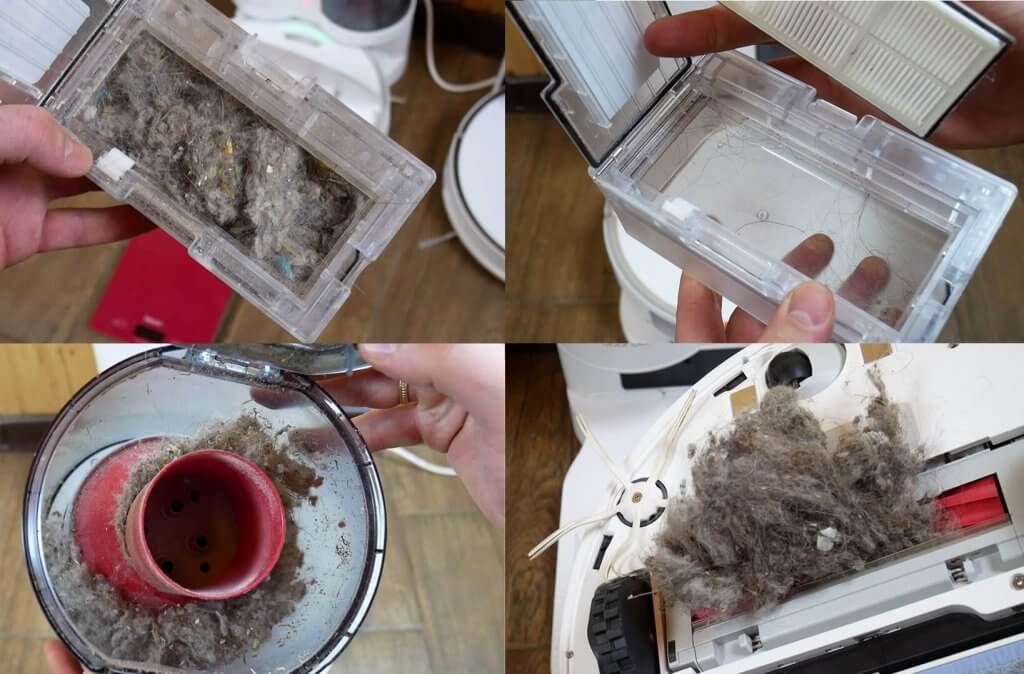
Ok, so the container was filled by hand, and not naturally. Maybe this had some effect on the outcome. But still, some self-cleaning vacuums showed better results in the same conditions.
And in conclusion I can freely say that the self-cleaning mechanism is far from perfect. Yeah, when the container is halfway full with random dirt like hair, fur, and small dirt, the results may be better. But there are still problems, especially with hair and larger dirt, which can get stuck near the central brush.
Pluses and minuses
Let’s start wrapping things up by giving the benefits of the Roborock S7 Auto Empty Dock:
- Base practicality, when talking about the fact that you can use the base with the disposable bag or without.
- Filtration system quality.
- Good assembly.
- Long power cord. Note that it is about 1,8 m (5.9 feet) long, which is enough to use without an extender.
And as for the most major problems, I found this:
- Too expensive.
- Average self-cleaning quality.
So all in all the base is pretty interesting, but for this price it would be good to at least have the robot do its main job perfectly, or close to it. So should you buy it, that’s up to you.
On this note I would like to end the review. If you still have questions, ask them in the comments below. Have fun shopping, bye!

